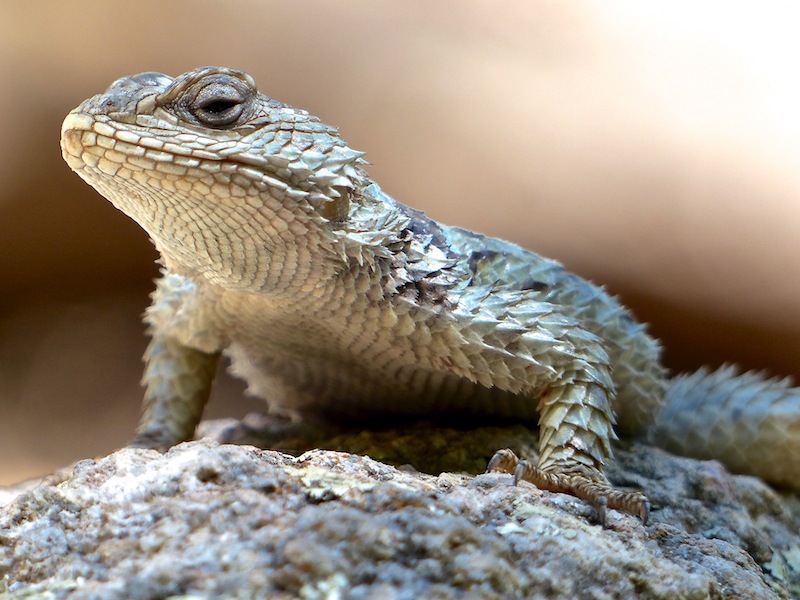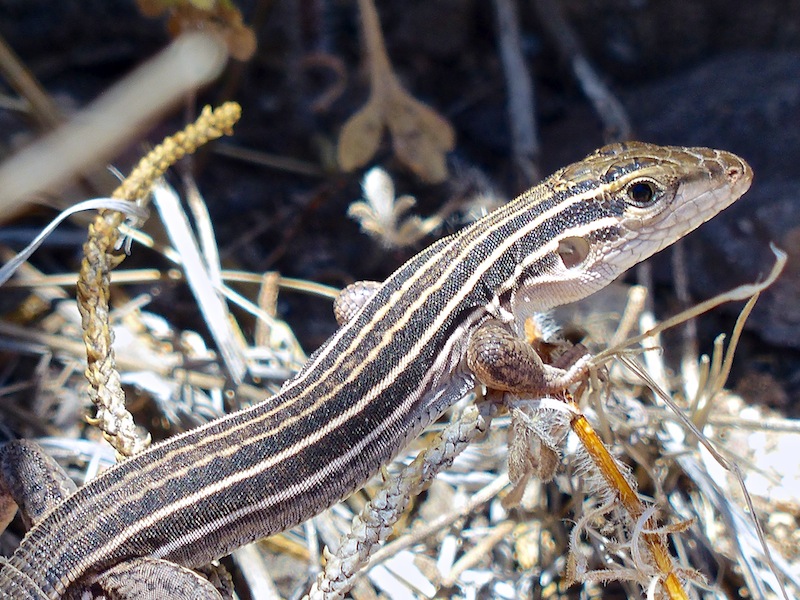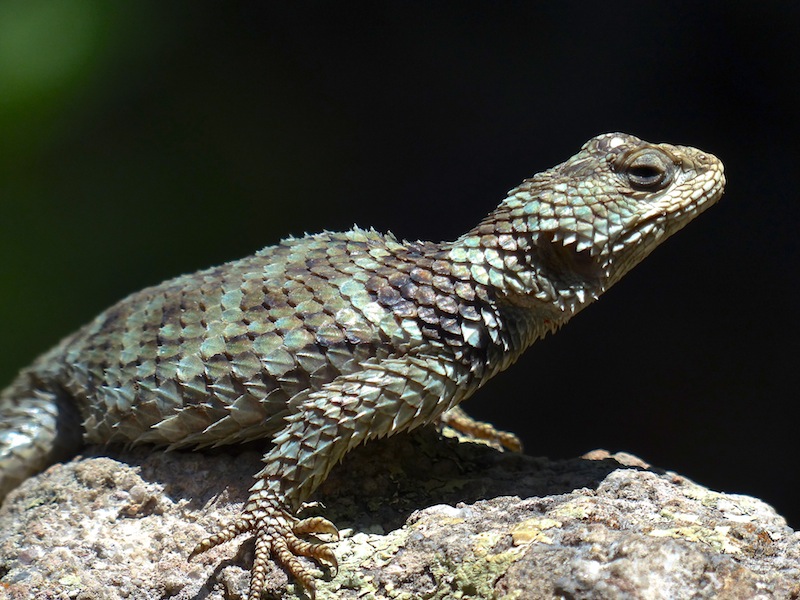Meet some Liz
Heavy deadlining at the clay bench for summer shows PLUS a new camera mean this space will have mostly photographic posts for a stretch. Here are two lizards who obliged while I was in New Mexico recently.
First up is a Crevice Spiny Lizard (bearing the excellent scientific handle Sceloporus poinsettii but in no way resembling a red flower often associated with winter holiday decor, except in a tendency towards pointiness). He was basking unabashedly on the waist-high peakity peak of a large triangular rock in the middle of the well-trodden trail to the Gila Cliff Dwellings. He (or she, I’m not acquainted with S. poinsettii well enough to know which, and they’re said to be similar anyway) simply did not care that I was there. It was breezy and the foliage swayed, exposing him alternately to blotches of shade and sunbeams. He didn’t care about that either. Of course, armed with long
He (or she, I’m not acquainted with S. poinsettii well enough to know which, and they’re said to be similar anyway) simply did not care that I was there. It was breezy and the foliage swayed, exposing him alternately to blotches of shade and sunbeams. He didn’t care about that either. Of course, armed with long  telephoto capability, I had no need to approach closely to observe him. We did, however, have to pass very near in order to finish the jaunt up to the cliff dwellings, and if I stopped briefly for a close perusal — which the subject endured without flinching — who can blame me? A lizard whose prime basking platform is a busy trailrock must get good at ignoring curious people. Crevice Spinies have a rep for being shy (one field guide recommends binoculars as an observation aid), so this guy must be an outlier.
telephoto capability, I had no need to approach closely to observe him. We did, however, have to pass very near in order to finish the jaunt up to the cliff dwellings, and if I stopped briefly for a close perusal — which the subject endured without flinching — who can blame me? A lizard whose prime basking platform is a busy trailrock must get good at ignoring curious people. Crevice Spinies have a rep for being shy (one field guide recommends binoculars as an observation aid), so this guy must be an outlier.
Below is another photo of the same liz. The subtle coppery green iridescence of the scales was caught by the camera in this shot, an artifact of sun angles and lens physics, apparently: to our human eye, the animal looked mostly gray and white with darker bands. Another lizard would have been all over the beautiful radiance immediately, its eye and brain built specifically to receive that shimmering information.
Now meet a whiptailed lizard (below), whose textures are quite different from the spiny lizard above. I think she’s a Desert Grassland Whiptail (Aspidoscelis uniparens). Some species of whiptail are unisexual: all individuals are females who reproduce by laying unfertilized eggs each with a tiny clone embryo ready to hatch out and carry on mama’s DNA. The Desert Grassland Whiptail is one of them, which explains its Latin moniker. She’s very beady and sleek in the sun — whiptails are abroad in the heat of the day — but was well warmed up and didn’t stay long to be admired, or to be questioned on her parthenogenetic lifestyle; there were termites to eat and predators to evade.



What fantastic shots! I love lizards.